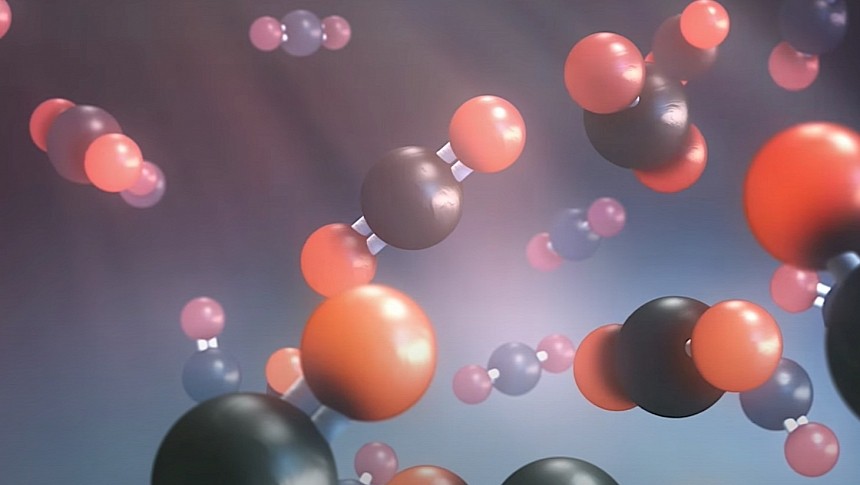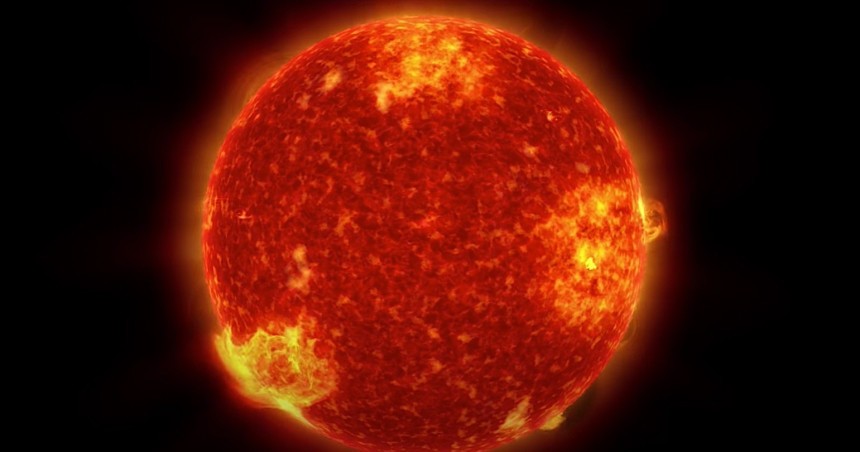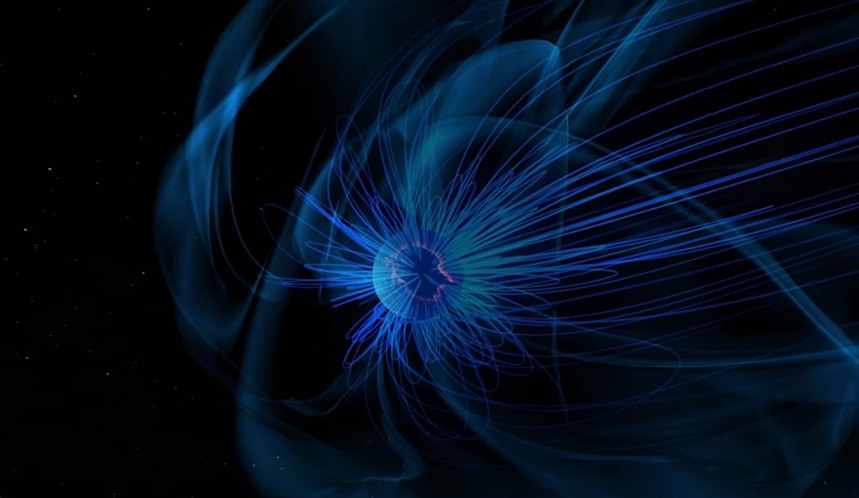We generally consider ourselves a pretty advanced society, in all respects. But for all our merits there are still a lot of things we know nothing about. And one of our civilization's biggest mysteries is how life began on this blue marble of ours.
There are several competing theories trying to explain the emergence of life on Earth, including one that states life down here began out there, in space (they call this one panspermia). The most commonly accepted one though by the scientific community is that of the warm little pond.
Dating back to the 1800s, this theory claims life came into existence in a sort of primordial soup. A collection of chemicals that happened to be in the same place at the same time got a jolt from some sort of energy source (lightning, heat, or something else) and evolved into amino acids that later led to the formation of organic molecules.
The theory above is more than just… a theory, at least partially. It was proven by the University of Chicago's Stanley Miller in 1953 in a lab experiment. Using a collection of methane, ammonia, water, and molecular hydrogen and an electrical spark to act as lightning, the scientist was able to create amino acids.
Miller's experiment however relied on some ideal conditions and quantities of chemicals. It's believed that on the real Earth all those eons ago there were far fewer quantities of ammonia and methane, and much more CO2 and nitrogen. And even if they too can form amino acids, they do that under a lot more power than a simple spark or a lightning hit.
Back in the days when life formed, such sources of energy were aplenty, in the form of meteor strikes and even ultraviolet radiation coming from the Sun. It's unclear which of them is responsible for the emergence of life, if the warm little pond theory is correct. And things got a lot more complicated this week, when NASA Goddard Space Flight Center's Vladimir Airapetian published a new paper in Life journal.
Some time ago, Airapetian used data from the Kepler telescope to advance his findings. True, Kepler is not pointed at our Sun, but at various other points in our galaxy, looking at stars in a bid to "discover hundreds of Earth-size and smaller planets in or near the habitable zone."
An interesting side effect of these observations is that the stars the telescope is looking at are at different stages of their life, and some can shed some light into the past of our own Sun.
Using this data, the scientist was able to determine that during our planet's first 100 million years in this solar system (that's about 4.4 billion years ago), the Sun was 30 percent dimmer than it is today, meaning it also produced a lot less heat. It was, however, a lot more active, shooting superflares into space, and those were more than enough to make up for the shortcomings.
These superflares still happen today, but once every 100 years or so. Back then, because the Sun was much more violent, they occurred every three to ten days, literally bombarding Earth with high-velocity particles on a constant basis.
Because our planet was still in the process of forming its magnetosphere, these particles reached the atmosphere and the surface a lot easier. As a result, it may be them, not lightning or some other energy source, that might just have been the ingredient needed for life to be born.
The above theory was published by Airapetian back in 2016, but it was only now put to the test in a laboratory. With help from other scientists, Airapetian created a mixture of carbon dioxide, molecular nitrogen, water, and methane, and bombarded it with protons that simulated solar particles. A separate experiment designed like that of Miller was used for control.
The findings are telling. When the methane proportion was above 0.5 percent and protons were used, "detectable amounts of amino acids and carboxylic acids" were created. By comparison, the lightning method needed 15 percent methane to barely create the stuff – in fact, millions of times fewer amino acids than when using protons, NASA says.
At the end of the experiments, the science team concluded that "all else being equal, solar particles appear to be a more efficient energy source than lightning." The video below shows how the entire process could have worked not in a lab, but in practice.
The finding is crucial for the search of life elsewhere in this vast galaxy of ours. It also hints that our Sun contributed to the creation of early life easier and sooner than initially believed.
The long and scientifically named "Formation of Amino Acids and Carboxylic Acids in Weakly Reducing Planetary Atmospheres by Solar Energetic Particles from the Young Sun" paper is available in the Life journal.
Dating back to the 1800s, this theory claims life came into existence in a sort of primordial soup. A collection of chemicals that happened to be in the same place at the same time got a jolt from some sort of energy source (lightning, heat, or something else) and evolved into amino acids that later led to the formation of organic molecules.
The theory above is more than just… a theory, at least partially. It was proven by the University of Chicago's Stanley Miller in 1953 in a lab experiment. Using a collection of methane, ammonia, water, and molecular hydrogen and an electrical spark to act as lightning, the scientist was able to create amino acids.
Miller's experiment however relied on some ideal conditions and quantities of chemicals. It's believed that on the real Earth all those eons ago there were far fewer quantities of ammonia and methane, and much more CO2 and nitrogen. And even if they too can form amino acids, they do that under a lot more power than a simple spark or a lightning hit.
Back in the days when life formed, such sources of energy were aplenty, in the form of meteor strikes and even ultraviolet radiation coming from the Sun. It's unclear which of them is responsible for the emergence of life, if the warm little pond theory is correct. And things got a lot more complicated this week, when NASA Goddard Space Flight Center's Vladimir Airapetian published a new paper in Life journal.
An interesting side effect of these observations is that the stars the telescope is looking at are at different stages of their life, and some can shed some light into the past of our own Sun.
Using this data, the scientist was able to determine that during our planet's first 100 million years in this solar system (that's about 4.4 billion years ago), the Sun was 30 percent dimmer than it is today, meaning it also produced a lot less heat. It was, however, a lot more active, shooting superflares into space, and those were more than enough to make up for the shortcomings.
These superflares still happen today, but once every 100 years or so. Back then, because the Sun was much more violent, they occurred every three to ten days, literally bombarding Earth with high-velocity particles on a constant basis.
Because our planet was still in the process of forming its magnetosphere, these particles reached the atmosphere and the surface a lot easier. As a result, it may be them, not lightning or some other energy source, that might just have been the ingredient needed for life to be born.
The findings are telling. When the methane proportion was above 0.5 percent and protons were used, "detectable amounts of amino acids and carboxylic acids" were created. By comparison, the lightning method needed 15 percent methane to barely create the stuff – in fact, millions of times fewer amino acids than when using protons, NASA says.
At the end of the experiments, the science team concluded that "all else being equal, solar particles appear to be a more efficient energy source than lightning." The video below shows how the entire process could have worked not in a lab, but in practice.
The finding is crucial for the search of life elsewhere in this vast galaxy of ours. It also hints that our Sun contributed to the creation of early life easier and sooner than initially believed.
The long and scientifically named "Formation of Amino Acids and Carboxylic Acids in Weakly Reducing Planetary Atmospheres by Solar Energetic Particles from the Young Sun" paper is available in the Life journal.










